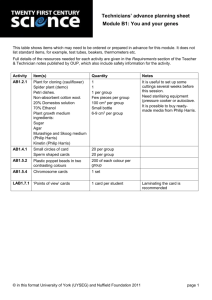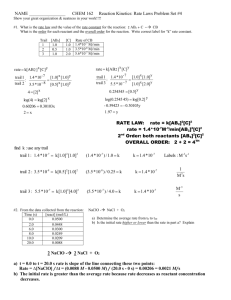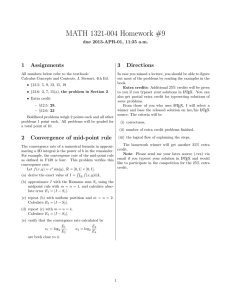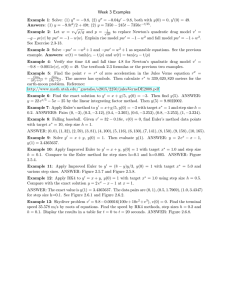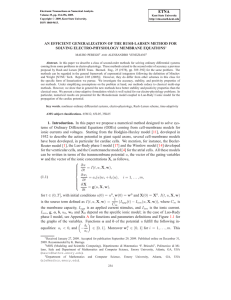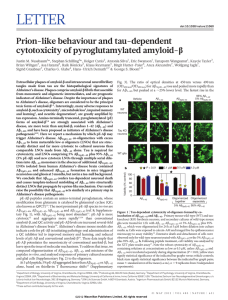Assignment 2 Varun Shankar February 4, 2016
advertisement
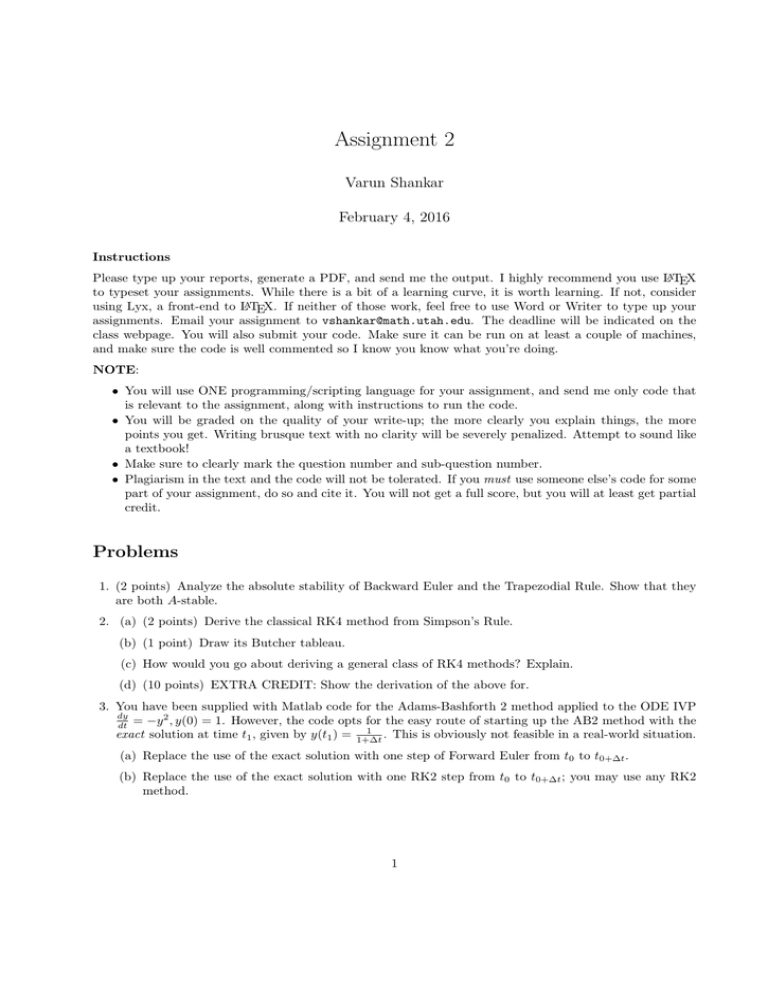
Assignment 2 Varun Shankar February 4, 2016 Instructions Please type up your reports, generate a PDF, and send me the output. I highly recommend you use LATEX to typeset your assignments. While there is a bit of a learning curve, it is worth learning. If not, consider using Lyx, a front-end to LATEX. If neither of those work, feel free to use Word or Writer to type up your assignments. Email your assignment to vshankar@math.utah.edu. The deadline will be indicated on the class webpage. You will also submit your code. Make sure it can be run on at least a couple of machines, and make sure the code is well commented so I know you know what you’re doing. NOTE: • You will use ONE programming/scripting language for your assignment, and send me only code that is relevant to the assignment, along with instructions to run the code. • You will be graded on the quality of your write-up; the more clearly you explain things, the more points you get. Writing brusque text with no clarity will be severely penalized. Attempt to sound like a textbook! • Make sure to clearly mark the question number and sub-question number. • Plagiarism in the text and the code will not be tolerated. If you must use someone else’s code for some part of your assignment, do so and cite it. You will not get a full score, but you will at least get partial credit. Problems 1. (2 points) Analyze the absolute stability of Backward Euler and the Trapezodial Rule. Show that they are both A-stable. 2. (a) (2 points) Derive the classical RK4 method from Simpson’s Rule. (b) (1 point) Draw its Butcher tableau. (c) How would you go about deriving a general class of RK4 methods? Explain. (d) (10 points) EXTRA CREDIT: Show the derivation of the above for. 3. You have been supplied with Matlab code for the Adams-Bashforth 2 method applied to the ODE IVP dy 2 dt = −y , y(0) = 1. However, the code opts for the easy route of starting up the AB2 method with the 1 . This is obviously not feasible in a real-world situation. exact solution at time t1 , given by y(t1 ) = 1+∆t (a) Replace the use of the exact solution with one step of Forward Euler from t0 to t0+∆t . (b) Replace the use of the exact solution with one RK2 step from t0 to t0+∆t ; you may use any RK2 method. 1 (c) Which approach is better in terms of accuracy, if any? Show results in the form of a plot to support your statement. This must be a convergence study with both RK2-bootstrapped-AB2 and FEbootstrapped-AB2 on the same plot. Use a solution computed with a sufficiently small ∆t as your “exact solution”, and compute the relative `2 error at a final time of your choice. Use a loglog scale for the plot. NOTE: Carefully go over the test script that shows you how to use the code. 4. Using the AB2 code as a starting point and using the variable name conventions, write an AB3 code that is started up by a single step of RK3. (a) Between AB2 and AB3, which would you use on a very stiff problem? Why? (b) Between AB2 and AB3, which would you use on a problem with purely imaginary λ? Why? (c) Using a convergence study on the above function run out to a sufficiently long final time, demonstrate that AB3 converges an order faster than AB2. Use the same approach as in the previous question for the convergence study. Page 2
